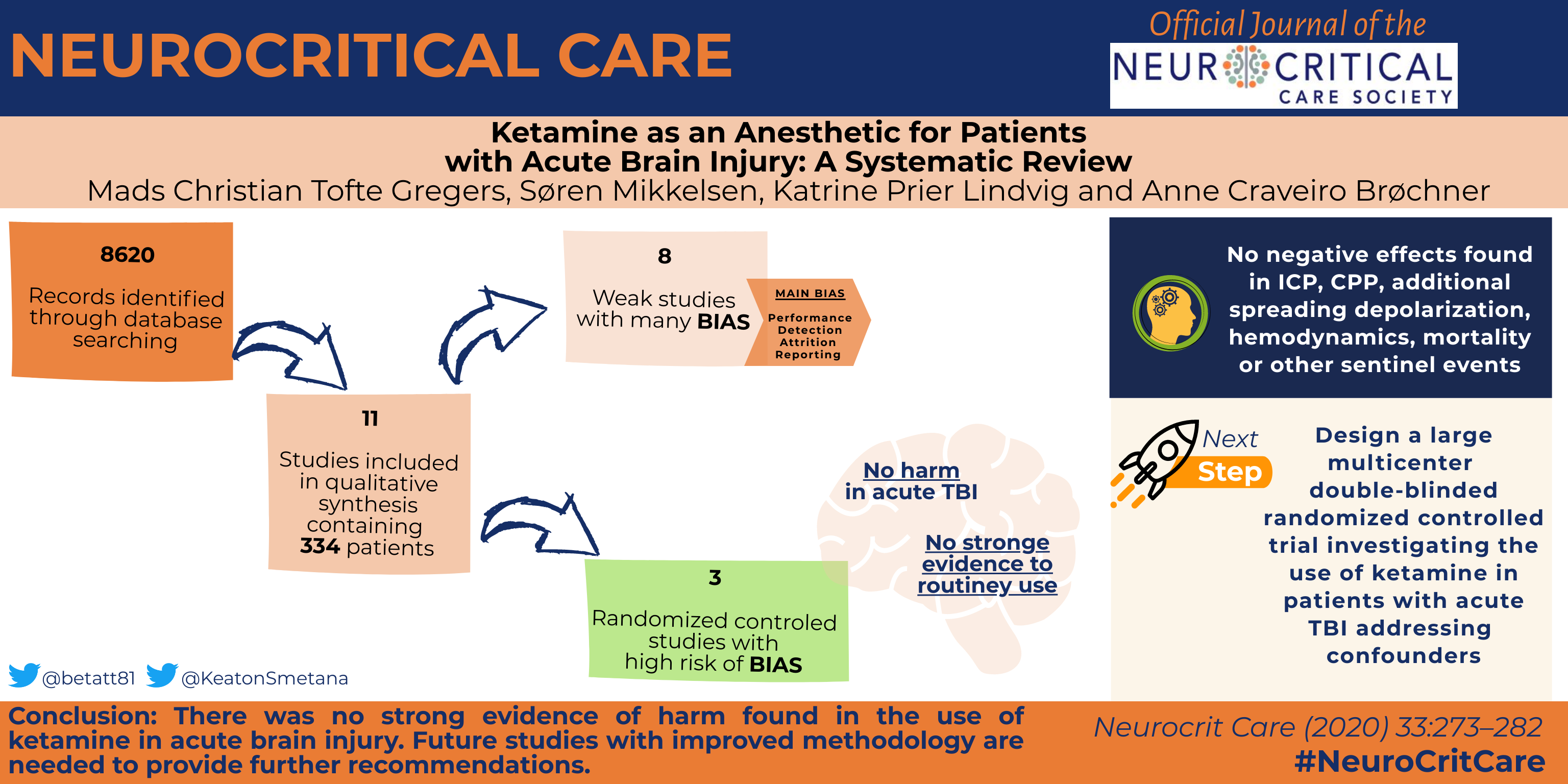By: Mads Christian Tofte Gregers, Søren Mikkelsen, Katrine Prier Lindvig & Anne Craveiro Brøchner
Published: 23 April 2020
Abstract

For years, the use of ketamine as an anesthetic to patients suffering from acute brain injury has been debated because of its possible deleterious effects on the cerebral circulation and thus on the cerebral perfusion. Early studies suggested that ketamine could increase the intracranial pressure thus lowering the cerebral perfusion and hence reduce the oxygen supply to the injured brain. However, more recent studies are less conclusive and might even indicate that patients with acute brain injury could benefit from ketamine sedation. This systematic review summarizes the evidence regarding the use of ketamine in patients suffering from traumatic brain injury. Databases were searched for studies using ketamine in acute brain injury. Outcomes of interest were mortality, intracranial pressure, cerebral perfusion pressure, blood pressure, heart rate, spreading depolarizations, and neurological function. In total 11 studies were included. The overall level of evidence concerning the use of ketamine in brain injury is low. Only two studies found a small increase in intracranial pressure, while two small studies found decreased levels of intracranial pressure following ketamine administration. We found no evidence of harm during ketamine use in patients suffering from acute brain injury.
Introduction
Ketamine is the best-known non-competitive N-methyl-D-aspartate receptor antagonist (NMDA). It was first discovered in 1956, and subsequent animal studies showed promising general anesthetic properties [1]. In 1964, ketamine was introduced as an anesthetic for humans and has thus been available for more than 50 years. Ketamine exists as two optical isomers: (S)-(+) and (R)-(−)-2-(2-chlorophenyl)-2-(methylamino)cyclohexanone. At present, ketamine is available as S-ketamine, the more potent of the two optical isomers, and as a racemic mixture containing both (S+) and (R−) ketamine.
Along with the antagonistic effect on the NMDA receptor shown in in vitro studies, ketamine has been shown to interact with opioid, monoaminergic, cholinergic, nikotinergic, and muscarinic receptors assigning ketamine a broad range of effects and side effects [2].
Read the full review.